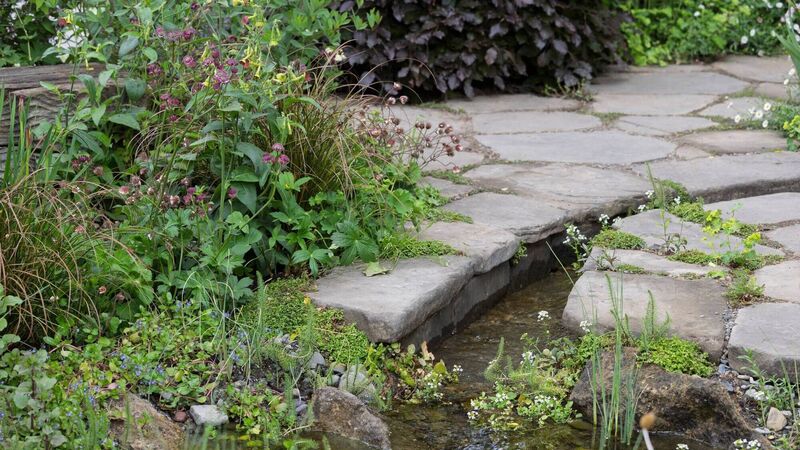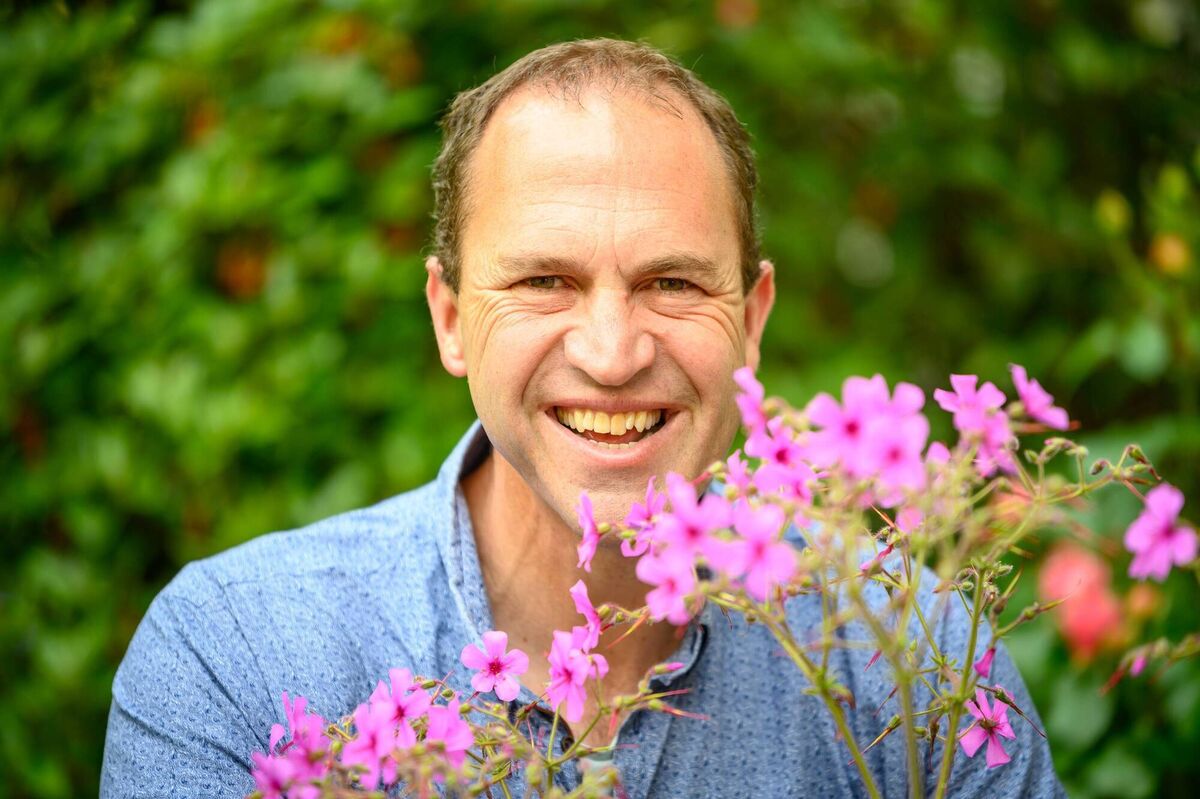Peter Dowdall: I cringe when I see 'stay off the grass' signs

Subtle use of water in The Glasshouse Garden, designed by Jo Thompson at the Chelsea Flower Show 2025. Picture: Neil Hepworth/RHS
Gardens are not simply to be looked at; they are places to be in. Sure, its lovely to look at a nice picture of a garden but truly, a real garden is a multi-sensory experience, you want to see the beauty yes, but you also want to feel it, touch the plants, the breeze against your skin, hear the birds singing and the insects humming, you want to taste the air, smell the roses, perhaps dance in the rain or bathe in the sunshine, no Instagram image can do that for you.
At Chelsea Flower Show this year, one of the strongest themes was the idea of sensory gardens, spaces that are designed not just for the eye but for the ear, the hand and even the nose. These were gardens to be felt and experienced, to immerse yourself in, rather than to stand back from.
Water was used a lot; designers were working with gentle, intimate sounds, streams trickling over stone, rain chains leading water from the roof, soft droplets falling into pools. The sound of water became part of the garden’s voice, not dominating but woven into the space more subtly, which is as it should be.
Texture and touch are another part of the jigsaw, think of the feel of moss under your fingertips or feet, or the rough bark of a silver birch. Plants like lamb’s ear, Stachys byzantina, with its soft, furry leaves, are irresistible to touch. Ferns with their fronds unfurling offer a different kind of texture, a feathery effect.
I cringe when I see those “Stay off the grass” signs. I want to break out my marker or spray paint and rewrite it so it reads “Get ON the grass — get down and dirty with the grass, play with it, touch the plants, roll about, reconnect, recharge, absorb the free electrons and earth yourself.” I don’t of course, as I don’t have any spray paint or markers when I am out and about, nor do I think the sign would be large enough.
I don’t have much meas in the term itself “sensory garden”, as I feel that all gardens should appeal to all the senses by their very nature, and one of those senses is the sense of smell.
In many ways, autumn is not the obvious season for fragrance, but that is precisely why it is so valuable. A patch of rosemary by the path, so that every time you brush against it, a waft is released, or a pot of thyme on the step where your hand reaches out to touch it or harvest some for the kitchen. Lavender, of course, continues to give its perfume, long after flowering has finished,
Taste is sometimes overlooked, yet it belongs in the sensory garden too. Edible plants add to the garden experience. A strawberry plucked still warm from the sun during the summer, a ripe apple, eaten while walking around, a sprig of fennel added to the dinner, these are simple but fabulous pleasures.
Even in the smallest courtyard, a pot of parsley or chives brings both flavour and fragrance, connecting us more deeply to the plants around us.
When you truly embrace the concept of a garden being a feast for all the senses, then it slows you down. Instead of rushing out, mowing the lawn, deadheading a few flowers and hurrying back in, you can’t, or at least, I can’t, help myself pausing to listen, to smell, to touch.
In an age where everything seems faster and noisier, the garden becomes the place where we are reminded to move slowly and pay attention.
Alongside Ollie Campbell and Nelson Mandela, Geoff Hamilton was one of my childhood heroes. He inspired me as a small child, each and every Friday, on Gardeners' World in a way that nobody who came after him has come even close to.
His paradise garden was one of his most personal and philosophical projects. He built it at Barnsdale in the early 1990s, and described it as a way of capturing the idea of a garden as refuge, nourishment, and pleasure not simply a place for plants but a sanctuary for people.
Sadly, he died just three years after completing it, but that garden stands as his legacy, a reminder that what we grow is not just for the eye, but for our whole wellbeing.
The name comes from the old Persian word pairidaeza, meaning an enclosed or walled garden, a safe place set apart from the world outside. For Hamilton, this meant designing a space where body, mind and spirit could rest.
He wrote that such a garden should “feed the senses, feed the body and feed the soul.” It was intended as a reminder that gardening is not just about display or fashion but about creating an intimate place of refuge and restoration.
Now, in 2025, 29 years after his passing, Chelsea showed us this year that the message never changed: the best gardens are those that engage all the senses. They are not about size or budget but about intimacy and depth.
We can all take that lesson home, to make our gardens places where we can be fully present, places that calm, restore and delight us in every season.

- Got a gardening question for Peter Dowdall? Email gardenquestions@examiner.ie









